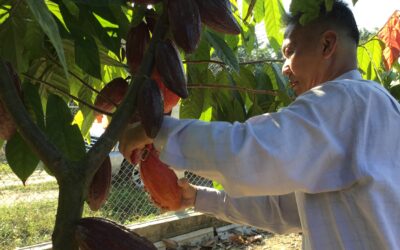My name is María, and ever since I joined the Cocoa Team at Daarnhouwer & Co. over ten years ago, I made it my mission to learn and understand cocoa quality and flavours. When I started back then, only physical analyses were performed on our cocoas. After cutting and inspecting the beans in a guillotine, these would then be placed in a coffee grinder, shell and all. The team would then smell the grounds in order to check for any defects. The results would be entered in a notebook and next to them a summary description of the smell: “good” or “not good”.
From Bean to Liquor: The evolution of cocoa quality evaluation at Daarnhouwer & Co
My former boss explained “We do the sourcing and distribution of the cocoas for our clients. We make sure we get the cocoa types they want from all around the world. The warehouse checks the parcels upon arrival and we do a double check of the physical integrity of the beans. We let the chocolate makers do their tests. They are after all, the ones who understand flavour.”
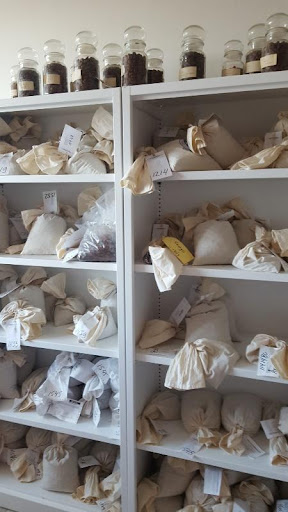

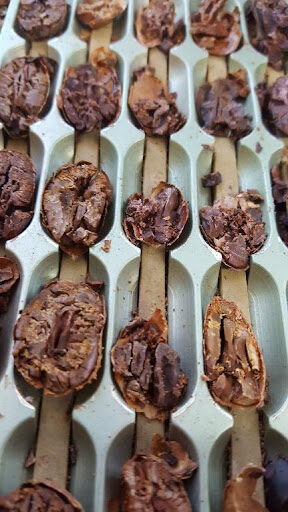
I was intrigued by the endless rows of samples from cocoas sourced from every single producing continent. A cocoa library of flavours waiting to be explored. I asked my boss whether I could start tasting our cocoas. He and my colleagues encouraged me and gave me all the liberty to explore. With one condition: I had to start tasting defects. Through endless trials, I learned that mould has a range of flavours: from musty and damp to fishy. That overfermentation can taste like cheese, ham, sweat or a smelly barnyard. That smoke can be pleasant or have notes of petrol fumes. That too many unfermented (slaty) beans would result in a flat profile with little flavour development and high astringency. I would perform the flavour analyses one spoonful of raw cocoa at a time. And yes, I did take the shells off the raw beans – my brittle and broken nails were a testament to this!

The colours of these raw ground samples are as diverse as their flavours.
A small air fryer was added to the process – after all, how would we be able to understand flavour development in our beans if we didn’t roast them? I got an inexpensive model at a German discount supermarket with a rotating drum and temperature control. I would break the beans with a roller and separate the nibs. And then grind them with our small, reliable coffee grinder. I researched – on and offline, exchanged notes with chocolate makers and cocoa growers, tasted chocolates made from our beans, and kept testing, tasting and developing a mental library of cocoa flavour notes and aromas.


Simple and inexpensive home appliances are still used for raw samples or for roasting very small samples.
Many years and trials later, I am still evaluating the physical and flavour characteristics of our beans. Still learning. Still amazed by the myriad of flavours contained in cocoa: every single batch a promise of something new and exciting.
The years of doing trials in a tiny sample room are long over and we now have a brightly lit Cocoa Lab with a professional convection oven, a manual cracker, a winnower and two grinders. All our incoming samples are bagged, labelled and organized in drawers. And each sample undergoes a physical evaluation and is sampled raw and as liquor. The hundreds of small liquor bottles are catalogued and saved for tastings. We even boast a collection of chocolates made by different chocolate makers working from the same bean. Each interpretation is unique: a reflection of the chocolate character of each maker.
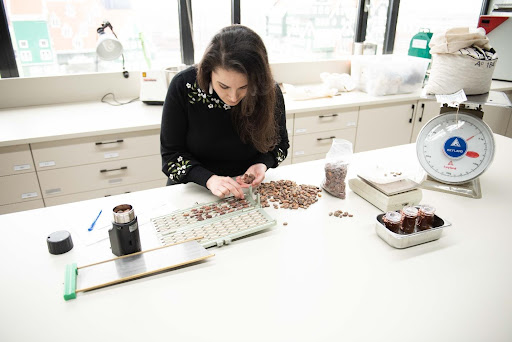
Our Cocoa Lab has also become a meeting place for chocolate makers and cocoa producers. A room where we taste together. Where chocolate makers come to find cocoa flavours that resonate with them. Where producers can test the beans, liquor and chocolate made with their beans. A space for exchanging sensorial experiences and knowledge.
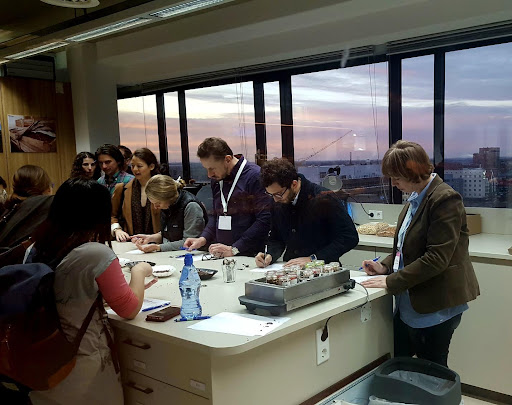
Want to join me on a personalized tasting session or want to learn more about cocoa quality evaluation? Feel free to reach out to me: m.jimenezrojas@daarnhouwer.nl
The following are guidelines and other useful resources we apply or use as a reference for performing the physical and organoleptic evaluation of our cocoa beans:
International Standards for the Assessment of Cocoa Quality and Flavour
Please note that these protocols are not yet official and are still under review with the goal to produce a standardized language throughout the value chain.
